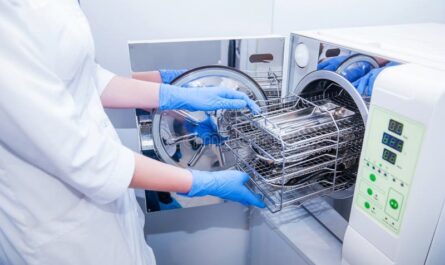Recreational oxygen equipment has gained significant popularity in recent years as more people seek to enhance their outdoor adventures and experiences. Whether you are an avid hiker or climber seeking to ascend to higher altitudes or just want to take your breath away with skydiving, these equipment play an important role in keeping you healthy and safe. In this article, we explore some key aspects of recreational oxygen equipment.
Types of Recreational Oxygen Equipment
There are different types of Recreational Oxygen Equipment available depending on your specific needs and activities.
Portable Oxygen Concentrators: These are lightweight, battery-powered devices that filter and increase the concentration of oxygen from ambient air. They are preferable for activities where carrying oxygen tanks can be inconvenient. Various models are available with different oxygen outputs and battery lives ranging from 2-12 hours on a single charge.
Oxygen Cylinders: Cylinder systems contain compressed oxygen in lightweight carbon fiber or aluminum cylinders. They are more suitable for activities where a continuous oxygen supply is needed for extended durations. Cylinders are available in various sizes offering oxygen durations from 30 minutes to over 8 hours. Cylinders must be regularly refilled from centralized filling stations.
Oxygen Tents: Oxygen tents are flexible, breathable enclosures that can deliver a controlled oxygen flow and higher oxygen concentration environment. They are useful for windy conditions or passive resting while receiving supplemental oxygen. However, they restrict mobility more than portable concentrators or cylinders.
Nasal Cannulas: These are the most common interface for delivering oxygen to the user from the above equipment. Cannulas fit snugly inside the nostrils to channel oxygen flow non-invasively. Other interfaces like full-face masks are also available for those needing higher oxygen concentrations.
Factors to Consider When Choosing Equipment
There are several factors to consider when choosing the right recreational oxygen equipment:
Activity Requirements: Consider the physical demands, duration and altitude of the activity. Choose equipment that can reliably deliver adequate oxygen flow for the whole duration.
Mobility Needs: Equipment with cylinders require less battery power but limit mobility. Concentrators are more portable but have limited battery life. Consider your activity’s mobility needs.
Budget: Equipment costs vary significantly based on features, capacity and brand. Consider affordable options suitable for your specific needs. Rentals are available for occasional use.
Safety and Regulations: Ensure equipment is certified for recreational use. Run unit checks and know operating procedures to use oxygen safely. Permits may be needed when flying with oxygen.
Consulting experts can help determine the most suitable oxygen equipment matching an individual’s medical needs, physical fitness, habits and budget. Proper equipment selection is essential for risk mitigation during oxygen-dependent altitude recreation activities.
Using Recreational Oxygen Equipment Safely
While recreational oxygen enhances experiences, it must be used safely as any misuse can pose serious health and safety risks:
– Always receive proper training from experts before using any recreational oxygen system independently.
– Be aware of and follow all regulations regarding flying with supplemental oxygen.
– Inspect equipment extensively for cracks, leaks or damage before every use.
– Use only certified oxygen cylinders filled by licensed professionals to desired pressures.
– Learn emergency procedures like how to respond to loss of oxygen flow or equipment malfunctions.
– Never smoke or use open flames around any oxygen system or storage areas due to fire/explosion risks.
– Monitor your own physical condition and available oxygen supply closely during activities.
– Consult a doctor to ensure your medical fitness for planned activities requiring supplemental oxygen.
Following manufacturers’ instructions, operating procedures and safety guidelines strictly is vital to mitigate risks and enable adventure recreation in heightened or compromised oxygen environments responsibly.
Health Benefits of Altitude Training With Oxygen
While oxygen equipment primarily facilitates recreation in otherwise inhospitable oxygen environments, studies show supplemental oxygen can also benefit health and fitness when used judiciously as part of altitude training programs:
– The reduced air pressure and oxygen concentrations at moderate altitudes stress the body similar to exercise, improving physical endurance over time.
– Using oxygen intermittently during altitude training blunts some stresses while letting the body still adapt cardiovascularly to thinner air.
– This “live high, train low” approach with supplementary oxygen is shown to boost red blood cell counts, cardiovascular fitness and maximal oxygen uptake more than normal altitude or sea level training.
– For recreational athletes and hikers, altitude training with oxygen helps acclimate the body, enhancing performance at higher elevations. It can cut acclimatization time for expeditions.
Thus when prescribed and monitored by experts, combining recreational oxygen use with structured altitude workouts offers conditioning benefits similar to natural high-altitude training. Further research continues to explore this promising field.
recreational oxygen equipment have provided millions safe access to relaxing or high-thrill activities in otherwise inhospitable higher altitude environments when used knowledgeably. Selecting the appropriate equipment matched to individual needs and using safety protocols can help mitigate risk and let users breathe easy at delightful heights. With guidance, oxygen-augmented altitude training may also confer health and fitness advantages over plain sea level workouts.




